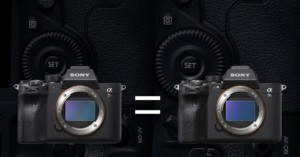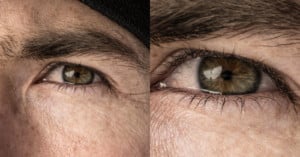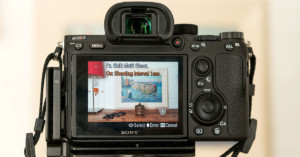
Stability AI’s New Upscaler Can Quadruple the Resolution of an Image
Stability.AI, the company behind Stable Diffusion, has announced a new artificial intelligence-powered upscaler that is capable of quadrupling the resolution of an image.

Stability.AI, the company behind Stable Diffusion, has announced a new artificial intelligence-powered upscaler that is capable of quadrupling the resolution of an image.

NeuralCam has launched version 5 of its iPhone app that adds a super-resolution 48-megapixel artificial intelligence (AI) upscaling system that it claims reduces noise and enhances detail in photos.

Microsoft has announced a set of new partnerships and capabilities for Azure Space, including the ability for satellites to "see" through clouds along with enhanced image fidelity.

We are proud to announce the first-ever PetaPixel Awards which praise a number of new photography products that our staff has voted on as the best in their respective categories.

In 2014, I started my project Applied Metaphysics – Ground Truth on exemplary still life. The goal was to produce very large prints (2 to 9 square meters and more) at a high resolution so that people could look at them very closely.

The $10,000 Fujifilm GFX 100 is probably the best medium format camera on the market right now. In almost every category the Fujifilm GFX 100 will outperform nearly every other medium format system.

Hot on the heels of Capture One, Adobe has finally brought native Apple silicon support for Lightroom Classic. In addition to promising straight performance improvements, Adobe is also adding several new features -- like Super Resolution -- to the popular photo editor.

When Adobe first unveiled Super Resolution, it gave photos a chance to increase in size without losing any quality, but it wasn’t clear whether that kind of magic extended to the trove of images on people’s smartphones.

The megapixel race has picked up steam lately with most new models exceeding 45-megapixels and rumors circulating of 100-megapixel sensors on the horizon. But what if low-resolution images from cameras like Sony's a7S III and Canon's R6 offered more detail along with added low light benefits? Now they can.

Adobe’s new Super Resolution is making a big splash in the industry as photographers can output cleaner upscaled images at four times the original pixel count. Is it really impressive enough to take the crown from Topaz Labs’ Gigapixel AI?

Adobe just dropped its latest software updates via the Creative Cloud and among those updates is a new feature in Adobe Camera Raw (ACR) called “Super Resolution.” You can mark this day down as a major shift in the photo industry.

Adobe has shipped the first version of Photoshop that can run natively on Macs equipped with Apple Silicon and also has announced a new feature for Adobe Camera Raw (ACR) called "Super Resolution" that is available today.

Pixelmator Pro just released a new tool called "ML Super Resolution": a machine-learning-powered feature that "makes it possible to increase the resolution of images while keeping them stunningly sharp and detailed." In other words, the real-world equivalent of all those movies where someone yells "Enhance!" at their computer screen.

"Super-resolution" and "pixel-shift" photography isn't just possible if you have a fancy camera that can move the sensor 1 pixel between shots. As Usman Dawood of Sonder Creative demonstrates in this video, you can even do it with your run-of-the-mill smartphone, shooting hand-held.

Since there are physical limits to how large sensors can be in smartphones, companies like Google have been pushing heavily into computational photography, the use of digital rather than optical processes to improve the capabilities of a camera. Here's a 3-minute video that explains how Google's super-resolution technology works.

The UK contact lens retailer Lenstore has released a 7.3-gigapixel "timelapse" of London. Titled 24 Hour London, the images show a view of England's capital city over a period of 24 hours in February 2018.

I blended 105 exposures to create a 620-megapixel photo of New York City transitioning from night to day after a snowstorm. "New York Transitions I" captures the dawn of a new day in New York City.

The new Sony a7R III has a new function called Pixel Shift. This function basically increases the resolution of your images by 4 times. In short: the camera takes 4 photos and shifts the sensor 1 pixel in between. By combining these images later (the camera itself doesn't do this) you get an image that has 4 times the resolution of a normal raw image (4 x 42 megapixel).

Let's Enhance is a new free website that uses neural networks to upscale your photos in a way Photoshop can't. It magically boosts and enhances your photo resolution like something straight out of CSI.

Check out this photograph of the Golden Gate Bridge. It's no ordinary photo: Bentley calls it "the world's most extraordinary car photograph." Why? Because it's a 53-gigapixel photo that you can zoom waaay into.

One of the technologies that's emerging in the camera world is using sensor-shifting to capture high-resolution photos. It involves shooting a sequence of shots with the sensor slightly shifted for each one, and then combining the photos into a high-res image. The new Olympus OM-D E-M5 II uses it to create 40MP photos using its 16MP sensor.
It turns out Apple has also been dabbling in the technology as well for its cameras, except with optical shifting instead of sensor shifting.

We’ve seen it in plenty of thriller/crime solver TV shows and movies: upon reviewing some grainy and very low-resolution surveillance footage, someone inevitably asks the technician, “can you zoom in on that and enhance it?” Then, with the quick press of a few masterfully placed keystrokes and bleepy computer sounds, the image is suddenly enhanced with vastly increased resolution and a key plot device is revealed.

“Super-Resolution From a Single Image” is an interesting research page by computer scientists …